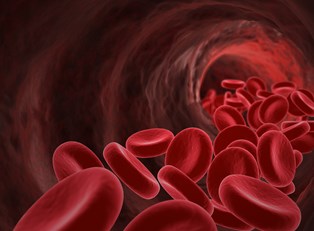As of yet, there is no cure for sickle cell anemia, a condition marked by the depletion of red blood cells that deliver oxygen via the circulatory system. Therefore, your physician’s first goal in treating your disease will be to prevent symptoms and the resulting life-threatening conditions from occurring. Secondly, when symptoms occur, the goal will be to reduce your risk of death and minimize the damage to your body.
Your physician will depend heavily on your cooperation to successfully manage your sickle cell anemia. Taking your medications, drinking plenty of water, eating a healthy diet, avoiding temperature extremes and overexertion, and preventing infection are things you can do to stay well and avoid a sickling crisis, or a period of intense pain and possible organ damage caused by blood flow-blocking sickle cells.
Treatment Providers
Most patients with sickle cell anemia are referred to a hematologist, a physician who specializes in treating conditions of the blood. Many patients live near a sickle cell clinic and have the advantage of disease management by a team of experts who specialize in sickle cell anemia. When patients live further away from specialists, care can be a coordinated effort between a local physician and a long-distance specialist. Whatever the case, you will need immediate access to medical care when a crisis occurs, so arrangements for such should be planned in advance.
Types of Treatment
While there is a variety of treatment options that address organ damage or secondary conditions, the following are available treatments that are aimed more directly at sickle cell anemia:
- Medications
Patients with sickle cell anemia are usually treated with medication in a three-fold way: antibiotics, pain-relievers, and a drug specifically designed for sickle cell anemia.
Periodic antibiotic therapy is used to help patients of all ages to ward off infections that trigger complications. Children usually take penicillin on a daily basis for the first five years of life.
Mild pain caused by blood vessel obstruction is sometimes managed with over-the-counter pain medication and heating pads. Patients may also be prescribed opioids to address more intense pain. Severe pain and swelling that persists for more than an hour should be considered a medical emergency.
Hydroxyurea is the first drug approved by the Federal Drug Administration for treating sickle cell anemia. According to the Mayo Clinic, hydroxyurea helps reduce the frequency of sickle cell crises by stimulating the production of fetal hemoglobin. Fetal hemoglobin is not sickle-shaped, which is why symptoms of sickle cell anemia do not show up in newborns until after the first three to four months of life. Some patients are not able to tolerate the side effects of hydroxyurea, while others experience a significant reduction in sickle episodes. Patients may also take supplemental folic acid that stimulates the production of red blood cells and helps prevent anemia.
- Vaccinations
In children with sickle cell anemia, vaccinations are vital to survival. In addition to standard vaccination protocol, sickle cell anemia patients of all ages may require additional vaccines and yearly flu shots that prevent against harmful infections that cause your body to stop producing new red blood cells.
- Blood Transfusions
Patients showing an increased risk of stroke may be given regular blood transfusions as a precautionary measure. Because sickle cell anemia patients have mutated blood cells, transfusions introduce healthy red blood cells from donated blood through intravenous injection.
- Bone Marrow Transplant
A high-risk treatment option for patients with severe cases of sickle cell anemia is a bone marrow transplant or stem cell transplant. A transplant involves extracting donated bone marrow cells and injecting them into your blood. As they circulate, they will settle into the areas of the bone, where they will begin to manufacture healthy red blood cells. Even when the procedure proves successful, there is still a risk that your body will reject the new cells, and the result can be fatal. Locating a donor can be difficult, and many terminal risks are associated with this option.
- Clinical Studies
Research for a cure and new treatments for sickle cell anemia are ongoing. Participating in experimental studies may increase your access to newer and possibly more effective treatments.



